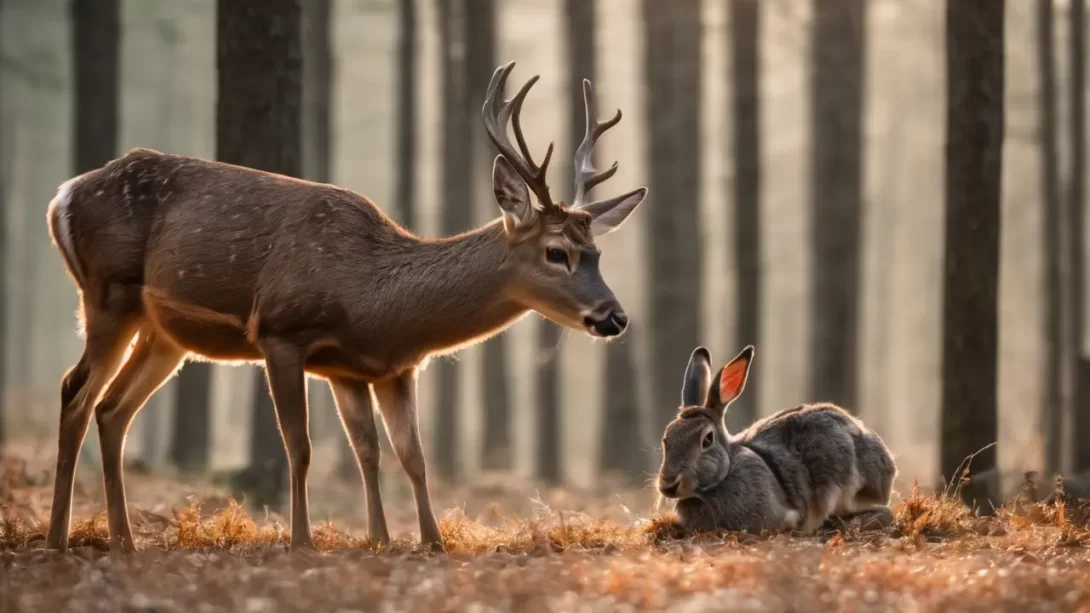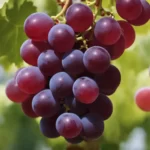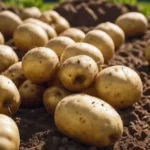There’s often curiosity and sometimes misconceptions about the diet of deer. Commonly seen grazing in meadows or near the edge of the woods, deer are a familiar sight in many landscapes. A question that sometimes arises is whether these herbivorous animals have a tendency to eat small animals, such as rabbits. This article aims to dispel myths and provide clarity about the dietary habits of deer, focusing on their herbivorous nature and what it entails for their interaction with other wildlife, like rabbits.
Deer Biology and Diet
Deer, belonging to the Cervidae family, are well-known for their herbivorous diet. Their biological makeup is specifically adapted for processing plant matter. Deer primarily feed on leaves, twigs, fruits, and nuts, which their digestive systems are well-equipped to handle. The misconception that deer might eat rabbits or other small animals likely arises from a misunderstanding of their dietary needs and biological capabilities. Understanding the natural diet of deer is crucial for appreciating their role in the ecosystem and for accurate wildlife knowledge.
The Herbivorous Nature of Deer
Deer are strict herbivores. This means their diet exclusively consists of plant material. They have a four-chambered stomach, which allows them to effectively break down tough plant fibers, a process known as rumination. This digestive adaptation is essential for their survival and is not conducive to processing meat. The types of vegetation deer consume can vary seasonally and geographically, but it includes grasses, herbaceous plants, leaves, and in some cases, agricultural crops. The anatomy of a deer, including its teeth and digestive system, is designed for a diet of vegetation, not for hunting or consuming meat.
Misconceptions about Deer Eating Habits
The idea that deer might consume rabbits or other small animals is a misconception that contradicts their natural feeding behavior and physiological adaptations. This myth may stem from occasional observations of deer investigating small animals or birds, which is typically driven by curiosity rather than predatory instinct. Additionally, deer have been known to ingest bone or antler material as a source of minerals, particularly calcium, which might contribute to the confusion about their diet. However, these instances are not indicative of carnivorous behavior but rather a dietary supplement for minerals that may be lacking in their plant-based diet.
Implications of Deer Diet on Wildlife and Ecosystems
Understanding the diet of deer is important for comprehending their role in ecosystems. As herbivores, deer have significant impacts on vegetation and landscape. Their feeding habits can influence plant community compositions, forest regeneration, and the overall health of ecosystems. Furthermore, the dietary preferences of deer can have indirect effects on other wildlife, including small mammals like rabbits. By consuming certain plants, deer may alter the habitats and food sources available to other species, which can have cascading effects on the ecosystem. It’s crucial to recognize these dynamics to effectively manage and conserve wildlife habitats and biodiversity.
Deer Behavior Towards Small Animals
While deer are herbivores, their interactions with small animals, including rabbits, are generally non-aggressive and non-predatory. Deer may exhibit curiosity towards small animals, sometimes observed sniffing or gently nudging them, but these behaviors should not be mistaken for hunting or carnivorous tendencies. In ecosystems, deer coexist with a range of wildlife, including rabbits, and their interactions are predominantly neutral, governed by the dynamics of shared habitats rather than predation.
The Importance of Understanding Deer Diet for Ecosystem Management
Accurate knowledge of deer diet and behavior is essential for effective wildlife management and conservation efforts. Misconceptions about deer being omnivorous can lead to misunderstandings about their ecological role and needs. Managing deer populations, especially in areas where they are overabundant, is crucial for maintaining balanced ecosystems. Overgrazing by deer can lead to habitat degradation, affecting a wide array of other species, including those that are prey for actual predators. Understanding the herbivorous nature of deer assists in making informed decisions about habitat management, wildlife conservation, and mitigating human-wildlife conflicts.
Conclusion
In conclusion, deer are herbivorous animals that do not eat rabbits or other small animals. Their diet strictly consists of plant matter, and their digestive system is adapted specifically for this type of diet. The misconception that deer might consume meat is unfounded and contradicts their biological and ecological characteristics. Recognizing the true nature of deer diet and behavior is important for appreciating their role in ecosystems and for accurate wildlife education. By understanding the intricacies of deer dietary habits, we can better appreciate these animals and the delicate balance of the ecosystems they inhabit.



